Sir George Smith Gibbes M.D. (1771–1851) was an English physician and writer.
Contents

Sir George Smith Gibbes M.D. (1771–1851) was an English physician and writer.

He was the son of George Gibbes, D.D., rector of Woodborough, Wiltshire. From the King Edward VI School, Southampton under Richard Mant, he went to Exeter College, Oxford, and graduated B.A. in 1792. He was elected a fellow of Magdalen College, and graduated M.B. in 1796 and M.D. in 1799. [1]

Woodborough is a small village and civil parish in the Vale of Pewsey, Wiltshire, England, about 3.5 miles (5.6 km) west of Pewsey. It is presumed to be named for the woods surrounding it.

King Edward VI School is a selective co-educational independent school founded in Southampton, United Kingdom, in 1553.

Exeter College is one of the constituent colleges of the University of Oxford in England and the fourth oldest college of the University.
Gibbes was elected a fellow of the Royal Society in 1796. [2] He joined the Royal College of Physicians in 1803, and was made a fellow the year after; in 1817 he delivered the Harveian oration before the College. He practised at Bath, Somerset, where he was a prominent figure, and in 1804 he was elected physician to the Bath Hospital. Later he became physician extraordinary to Queen Charlotte, and in 1820 was knighted by George IV. He took part in municipal business at Bath, and was a member of the corporation until 1834. [1]

The President, Council and Fellows of the Royal Society of London for Improving Natural Knowledge, commonly known as the Royal Society, is a learned society. Founded on 28 November 1660, it was granted a royal charter by King Charles II as "The Royal Society". It is the oldest national scientific institution in the world. The society is the United Kingdom's and Commonwealth of Nations' Academy of Sciences and fulfils a number of roles: promoting science and its benefits, recognising excellence in science, supporting outstanding science, providing scientific advice for policy, fostering international and global co-operation, education and public engagement.

The Royal College of Physicians is a British professional body dedicated to improving the practice of medicine, chiefly through the accreditation of physicians by examination. Founded in 1518, it set the first international standard in the classification of diseases, and its library contains medical texts of great historical interest.

Bath is the largest city in the ceremonial county of Somerset, England, known for its Roman-built baths. In 2011, the population was 88,859. Bath is in the valley of the River Avon, 97 miles (156 km) west of London and 11 miles (18 km) south-east of Bristol. The city became a World Heritage site in 1987.
Gibbes in 1835 gave up practice and went to live at Cheltenham. He died at Sidmouth on 23 June 1851, aged 80. [1]
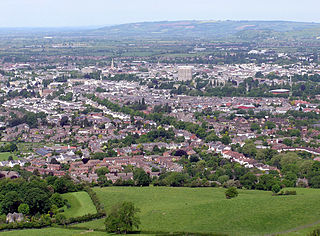
Cheltenham is a regency spa town and borough on the edge of the Cotswolds in Gloucestershire, England. Cheltenham has been a health and holiday spa town resort since the discovery of mineral springs in 1716 and has a number of internationally renowned and historic schools.

Sidmouth is a town situated on the English Channel coast in Devon, South West England, 14 miles (23 km) east-southeast of Exeter. In 2004, it had a population of about 15,000, of whom 40% were aged 65 or over. By the time of the 2011 census the population was 12,569. It is a tourist resort and a gateway to the Jurassic Coast World Heritage Site. A large part of the town has been designated a conservation area.
The main works published by Gibbes were the 1800 he published his Treatise on the Bath Waters (1800) with a second treatise (1803), and Pathological Inquiries, or an Attempt to Explain the Phenomena of Disease, Bath, 1818, a semi-popular if philosophical exposition of the principles of medicine. He wrote also: [1]

Spermaceti is a waxy substance found in the head cavities of the sperm whale. Spermaceti is created in the spermaceti organ inside the whale's head. This organ may contain as much as 1,900 litres (500 US gal) of spermaceti.
Gibbes was a fellow also of the Linnean Society, having communicated an account of the contents of a bone-cave on the north-west side of the Mendip Hills, one of the earliest explored bone-caves in England. To William Nicholson's Journal of Natural Philosophy he contributed a papers on the Bath waters and other chemical subject, and to Alexander Tilloch's Philosophical Magazine a "Description of the Diacatoptron". [1]

The Mendip Hills is a range of limestone hills to the south of Bristol and Bath in Somerset, England. Running east to west between Weston-super-Mare and Frome, the hills overlook the Somerset Levels to the south and the Chew Valley and other tributaries of the Avon to the north. The hills give their name to the local government district of Mendip, which administers most of the area. The higher, western part of the hills, covering 198 km2 (76 sq mi) has been designated an Area of Outstanding Natural Beauty (AONB), which gives it a level of protection comparable to a national park.
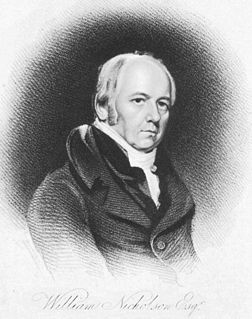
William Nicholson was a renowned English chemist and writer on "natural philosophy" and chemistry, as well as a translator, journalist, publisher, scientist, inventor, patent agent and civil engineer.

Alexander Tilloch FSA (Scot) was a Scottish journalist and inventor. He founded the Philosophical Magazine.
He was twice married, first to a daughter of Edward Sealey of Bridgwater, who died in 1822; and secondly, in 1826, to Marianne, daughter of Captain T. Chapman, 23rd regiment. [1]
Attribution
![]()

William Henry was an English chemist. He was the son of Thomas Henry and was born in Manchester England. He developed what is known today as Henry's Law.

John Yelloly was an English physician.

Frodsham Hodson (1770–1822) was an English churchman and academic, the Principal of Brasenose College, Oxford from 1809.

Hugh Hamilton was a mathematician, natural philosopher (scientist) and professor at Trinity College, Dublin, and later a Church of Ireland bishop, Bishop of Clonfert and Kilmacduagh, and then Bishop of Ossory.

Latham of Bradwall is a family whose seat was at Bradwall Hall, in the township of Bradwall, near Sandbach, England, with several notable members. The line is "a junior branch of the ancient Cheshire house of Lathom, of Lathom and Knowsley, which terminated in the heiress, Isabella Latham, who married Sir John Stanley, Knt., ancestor of the Earls of Derby". The family is not thought to be related to John Latham (1740–1837) the ornithologist, although this appears to be uncertain.

Sir Christopher Pegge M.D. (1765–1822) was an English physician.

Sir Lucas Pepys, 1st Baronet was an English physician.
William Rutty M.D. (1687–1730) was an English physician.

Sir Benjamin Hobhouse, 1st Baronet (1757–1831) was an English politician.

Pelham Warren (1778–1835) was an English physician.
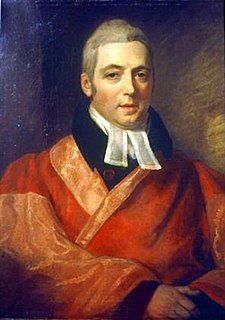
William George Maton M.D. was an English physician, a society doctor who became associated with the British royal family. He published on natural history and antiquarian topics.
Edward King (1735?–1807) was an English barrister and writer. His best-known works were on castles and antiquities.
Sir Richard Manningham M.D. (1690–1759) was an English physician and man-midwife, now remembered for his involvement in the Mary Toft hoax.
Richard Davies M.D. was an English physician.
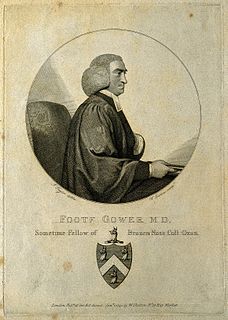
Foote Gower (1725/6–1780) was an English cleric, academic and antiquarian.

Dr John Hunter FRSE (1754–1809) was a Scottish physician linked to Jamaica.

Daniel Lysons M.D. (1727–1800) was an English academic and physician.
John Johnstone (1768–1836) was an English physician and biographer.
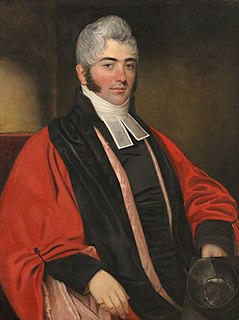
William Chafy served as Master of Sidney Sussex College, Cambridge from 1813 until his death.